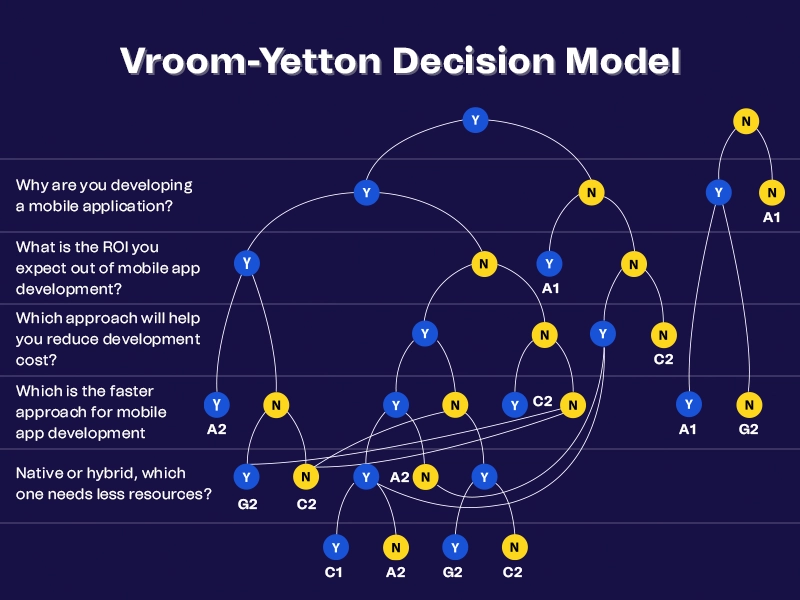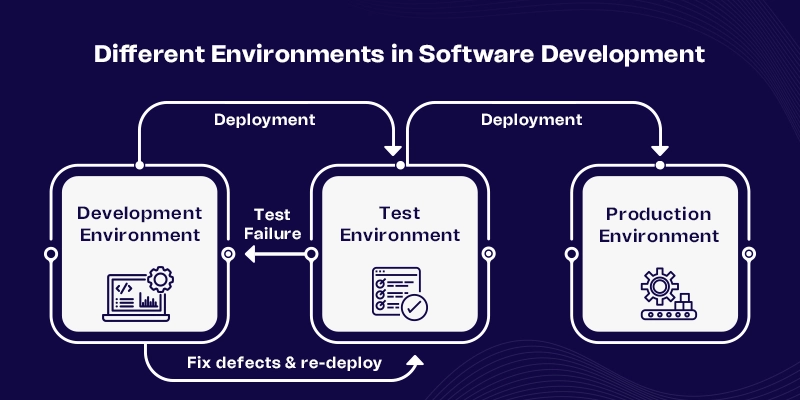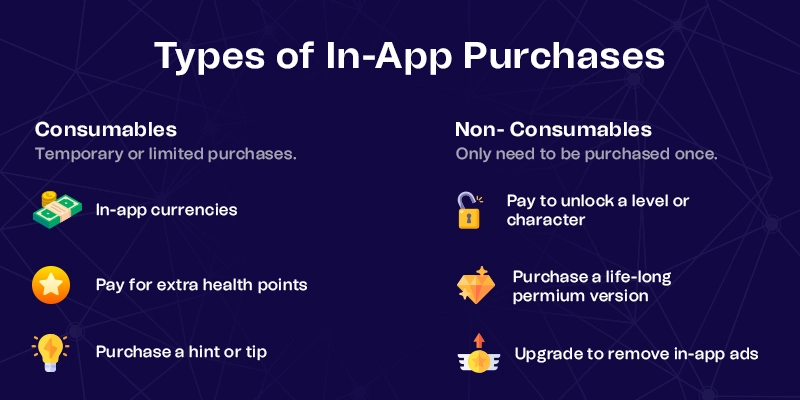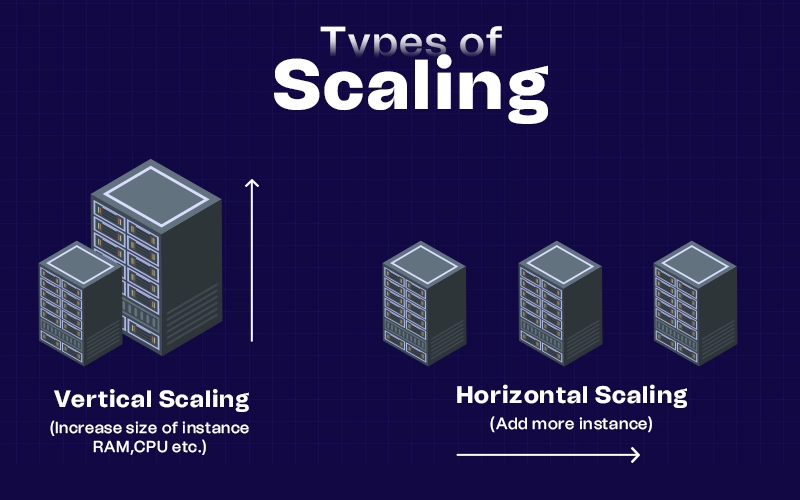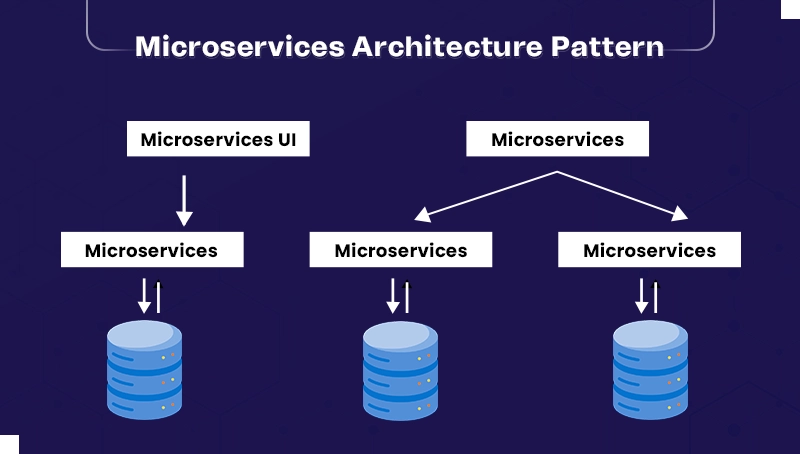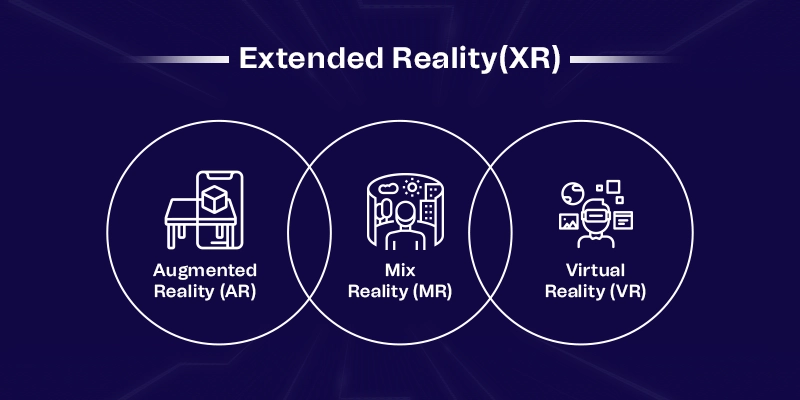At this point, stating that mobile apps are daily essentials is an understatement. They have been pivotal in transforming how users interact with businesses and how companies operate. However, the overarching reach drives startups and enterprise mobile app development projects.
A total of 5.86 billion people around the world use mobile phones. If you do not develop a mobile app in the current era, you will miss out on 70% of the world’s population. Though developing a mobile app for your business is difficult, you need to consider the target audience, the problem your application will solve, costs, and the monetization model.
You must also consider the technology stack and efforts required to build mobile apps. This article is your go-to resource for mobile app development, covering everything from types of applications to tech stacks, monetization models, cost estimation, future trends, and more.
Before diving into a mobile app development guide, it’s crucial to grasp the basics. This foundational knowledge will be your springboard to understanding the more complex aspects of app development.
Basics of Mobile App Development
Mobile app development involves creating software applications that can run on a smartphone, such as providing specific user services. It is separate from the other spas, enabling users to order food or groceries and automate several data-intensive tasks.
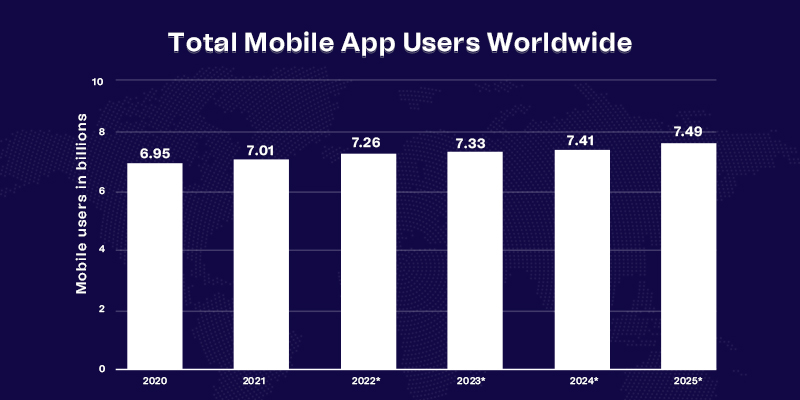
This is why the user base of mobile apps is growing, with more than 7.4 billion users worldwide. A mobile app can help your business tap into a massive market with a continuously increasing user base.
What type of app can you build?
From native to hybrid and web applications, you have plenty of options for developing a new mobile application. However, choosing the type will always depend on specific business needs. For example, if you are creating a mobile application for a particular target Apple user, developing a native iOS application makes more sense.
Let’s first understand the types of mobile apps used for better decision-making!
Native Apps: Localization of Mobile App Development!
Localizing your app development means creating an application that aligns with the guidelines of native platforms like iOS and Android. A native application is designed and developed based on the platform’s requirements.
For example, if you are building an iOS app, you must consider particular aspects, like widgets created for the dynamic island in Apple devices. You can leverage iOS development services to develop a native application for the entire Apple ecosystem.
Similarly, the Android platform has specific requirements and a native environment for developers to follow for a native experience. This does make mobile app development for a startup owner- “Develop an app for the platform you want to target! Right?”
Well, deciding what type of application you should develop for your startup idea will depend on multiple factors, like
Let’s compare native mobile app development with other types for better decision-making!
Native vs Hybrid Mobile Apps: What to Develop?
Hybrid apps are a specific type of native app that resembles native applications. However, hybrid apps lie somewhere between native apps and web applications.
But if both are so similar, why consider hybrid apps?
The difference lies in the structural approach to developing these applications. Native apps are created individually for each platform.
So, you need to create two separate codebases for each native platform.
Hybrid apps need a single codebase wrapped in a lightweight native shell. Users can still download a hybrid app from the Play Store like a standard native app, but internal architectural differences exist.
The lightweight native wrapper ensures faster performance while maintaining user experience. With a single codebase, you reduce the cost and effort needed to develop individual apps for each platform.
How do you decide the best type of mobile app you can develop? The answer lies in the question- “Use the Vroom-Yetton Decision Model!” It’s a question-based approach to decide which type of mobile app you can develop. You need to question different aspects of the mobile app development decision, such as,
Analyze both approaches and answer these questions with a yes or no! Create a chart like the one below, which is a decision.
Similarly, you can plot a chart for native and web apps to decide which is best for your project. Here are some key differences between all three types of apps.
| Differentiators | Native Apps | Hybrid Apps | Web Apps |
| Functionality | Access to native features | Access is based on the browser | Access is limited to web browsers |
| User Experience | Consistent native experience | Native-like experience | Lacks consistency |
| Performance | Faster, more responsive and interactive | Quicker and responsive close to native performance | Slower and less responsive |
| Application Development Complexity | Complex to develop with native requirements | Medium complexity due to native wrapping of the web app | Simpler to develop |
| Cost Efficiency | Needs heavy financial investment | It needs less investment than native apps | It is cheaper than native and hybrid app |
| Customer Reach | Customer reach is limited to a specific platform | Reach is higher due to cross-platform capabilities | Web apps have limited reach due to browser limitations |
Comparing the three based on specific differentiators and using the “Vroom-Yetton Decision Model” will help you decide the best mobile app type to develop. Once you choose to build a particular kind, it’s preparation time!
Preparing for Your App Development Journey
Preparing for the mobile app development process requires an understanding of two vital aspects:
Knowing these technical aspects is crucial, especially if you are developing a mobile app for the first time. However, you can always choose an expert mobile app development consulting service that offers all the necessary tools. This will help you reduce the time and effort needed to choose the right tools.
Essential Tools and Software for Mobile App Development
When you set out to develop a mobile application, it can become overwhelming. There is a lot to consider, from what platform to target to what tools to use, technologies to leverage, and approaches to development.
Making it easier for first-time app developers, here is a list of tools you can use for mobile app development:
Integrated Development Environments (IDEs)
1. Android Studio
Android Studio is one of the most popular tools for mobile app development, specifically native applications. It is an Integrated Development Environment(IDE) for Android that streamlines mobile app development.
It supports features like a visual layout editor and code editor, has a built-in emulator, and offers integration with the Google Cloud Platform.
Android Studio Features for Mobile App Development
2. Xcode
Xcode is a customizable IDE developed specifically for the Apple ecosystem. It allows you to applications for create Apple phones, iPads, macOS, watchOS, acations. This tool has a code editor, UI builder, debugger, and app optimization tool.
Xcode supports programming languages like Swift, Objective C, C++, and Python. For now, it is the only official tool for publishing apps on the Apple Play Store.
Features of Xcode
3. Visual Studio Code(VS Code)
VS Code is a lightweight yet powerful source code editor. It supports several programming languages and frameworks. VS Code provides versatility and extensibility through plugins. With features like IntelliSense and debugging capabilities, VS Code has become one of the most preferred code editors.
Key Features of VS Code
Mobile Application Testing Tools
1. Android Virtual Device(AVD)
AVD is an emulator that allows developers to test applications on virtual devices quickly. It enables you to create an artificial environment and test how the app behaves in specific scenarios. You can create and manage AVDs through Android Studio AVD Manager.
Features of Android Virtual Device(AVD)
2. Appium
Appium is an open-source test automation framework designed for testing Android and iOS mobile applications. It supports native, hybrid, and mobile web apps, allowing flexible testing options. Appium uses the WebDriver protocol, making it adaptable to various testing needs and environments.
Features of Appium
Mobile App Development Frameworks You Can Use For Your Project
1. Flutter
Flutter is an open-source framework created by Google offering widget-based and streamlined mobile app development. It enables developers to build natively compiled mobile, web, and desktop applications from a single codebase.
It provides a faster way to create UIs with pre-designed widgets. Based on the Dart programming language, it enables developers to build applications for Android, iOS, Linux, macOS, Windows, and others.
Features of Flutter
2. React Native
Developed by Facebook, React Native is another cross-platform framework that allows developers to create JavaScript-based applications. This framework enables building UIs with declarative components for a seamless user experience.
React Native allows developers to share significant code across platforms while utilizing native components for optimized performance.
Features of React Native
3. Xamarin
Microsoft-backed Xamarin facilitates cross-platform mobile development using C#. It allows shared code across platforms while maintaining access to native API capabilities. Xamarin’s deep integration into Visual Studio makes it a popular choice for developers familiar with the Microsoft ecosystem.
Features of Xamarin
4. Ionic
Ionic is an open-source framework which supports development of hybrid mobile applications using HTML, CSS, and JavaScript. It offers a library of components and tools that enable responsive application development. Ionic apps can run on platforms like iOS, Android, and Windows.
Features of Ionic
Setting Up Your Development Environment
Now that you know the tools you may need to develop the mobile applications, the next important aspect to focus on is creating the development environment. First, you need to understand different environments in a software development process, and then, you need to know the steps to set up the environment.
There are different environments for each phase of the software development lifecycle. For example, developing your mobile will need the configuration of a development environment. Similarly, there is a separate environment for testing and production.
| Type of Environments | Description |
| Development Environment | It is the first environment developers use to design, code, and debug software. |
| Testing Environment | Testing teams use this environment to test the application and fix bugs. |
| Staging Environment | Code compilation happens in this stage after rigorous testing. |
| Production Environment | Lastly, the deployment phase needs a production environment where new versions of apps are released for the target audience. |
Identifying environments, configuring them and deploying the app needs expertise and this where you must consider expert mobile app development company for your project. Next, once you know the types of environments, it’s time to set up one for your mobile app development.
1. Choose a Mobile App Platform
The first step in setting up a development environment is to choose a platform, such as iOS or Android. For seamless app development, you must consider the operating system’s compatibility with your environment.
2. Select The Right IDE
Selecting the proper IDE ensures efficient coding, compilation, testing, and debugging. You must choose the IDE according to the platform where you want to deploy the mobile app. For example, choosing Android Studio makes sense if you build an Android mobile application.
3. Install Tools And Packages
Once the environment is ready, install the tools and software packages for different aspects of development, such as coding, testing, or any other activity. For example, you must install testing tools like Selenium or Appium before conducting tests.
4. Configure And Organize
Finally, setting up the environment will require configuration according to the operating system and tools. Another vital aspect is separating source code, compiled codes, and external libraries. These four steps will lay the foundation of your mobile app development project, leading to the ultimate process of ideating, designing, developing, testing, and deploying the mobile app.
Mobile App Development Process: A QuickStart Guide!
Now that your environment is set, you can start the mobile app development process with the following steps,
When publishing your mobile application on the store, you must be mindful of the OS-specific guidelines. Each operating system has its own set of guidelines that developers must follow to publish the application. These include coding, testing, and security best practices.
Understanding App Store Guidelines and Requirements
Set of mobile application guidelines that you must consider for reliable mobile app development and deployment across Play stores are
1. Apple App Store Guidelines
The Apple ecosystem has specific guidelines for developers when developing device applications. For example, developers must comply with Apple’s UI requirements, security guidelines, and monetization policies.
UI Requirements For iOS Mobile App Development
Apple has specific guidelines for content and UI on your iOS applications. These guidelines dictate how apps must be designed and what content developers can add to the applications.
Data Security Standards
Data privacy is one of the significant compliance requirements if you want to publish on the Apple app store. These guidelines mandate the addition of stringent security standards and secure user data collection.
Monetization and In-App Purchases
Developers looking to monetize their applications must follow specific Apple guidelines. You must have heard of Epic Games and Spotify’s conflict with Apple regarding the monetization policy. So, if you are new to mobile app development, ensuring compliance with Apple’s monetization policy becomes crucial.
2. Google Play Store Guidelines
Like Apple, Google also has specific guidelines developers must follow to publish the application on the Play Store.
Now that you know the guidelines for publishing your application on the Play Store, let’s understand how you can monetize it.
Monetizing Your Mobile App For Maximum Profits
Startup owners and entrepreneurs are often so focused on solving a problem that they forget the sole activity that drives their business forward—“App Monetization.”
Without monetization, there will be no cash flow, and you will fall into a trap. Fret not! Because there are many ways to monetize your mobile apps.
Some prominent ways to monetize apps are
1. In-app purchase
In-app purchases are one of the most significant ways to make money from your mobile applications. Especially if you consider mobile games, in-app purchases are one of the essential contributors to monetization sources.
It is not just in-app merchandise; gamers are looking for rewards for higher spending on such spending. According to a survey, 51% of gamers are considering spending more to get extra points or rewards within the game.
This shows the rising demand for in-app purchases in the mobile gaming industry. Using an in-app purchase model, you can provide personalized content for your target audience while charging them extra.
There are two major categories of in-app purchase categories that you can offer,
The dual advantage of increased revenue and user base makes in-app purchases an attractive monetization strategy. You can provide basic features or content for free and charge for more premium content.
2. Freemium Model
Freemium models are one of the most popular monetization strategies, and they have helped startups like Spotify become tech giants! Yes, this is a model where you offer some content free and charge a premium.
However, the freemium model is not restricted to offering gated content. Instead, it has widespread applications. For example, Software as a Service(SaaS) companies offer B2B products with limited features and charge more for businesses to access premium features.
Take Shopify, for example. It provides a platform for any eCommerce business to build its online shop. However, the free version has limited features, and to unlock the personalization feature, you need to pay for a premium subscription.
3. Subscription Model
The subscription model is astute to a category of mobile app monetization that you can leverage for years. Yes, subscription models help you engage with customers for more extended periods.
Because subscriptions are often monthly, quarterly, half-yearly, and annually, regular money flow ensures your operations run smoothly, and you get more capital to innovate.
A classic example of subscription-based monetization is Netflix, which has become one of the prominent tech giants over the years. Similarly, you can create subscription tiers for your product or service and charge customers.
4. Advertising model
Ads are a standard monetization model, and for a long time, many Businesses have leveraged ads across mediums. This is the same with mobile applications, too. Mobile app developers and startups can use ads on their applications to earn money.
Some of the types of ads you can run on your app are
Mobile app advertising is also helpful for businesses that provide free services. For example, YouTube allows free streaming of videos and music but runs ads to earn money.
Similarly, you can earn money from the mobile application. However, the scale is the most considerable aspect of your mobile app development project. How you scale your app will determine the user base, ultimately impacting monetization.
Scaling Your Mobile App For Higher ROI
Scaling your mobile application can help increase the user base. More the user base will be the revenue with better conversions and ad revenue.
Architectural Patterns For Scaling
Mobile application architecture is a high-level structure that provides a set of rules by which different components interact and function. This is important for mobile app developers to ensure a streamlined data flow and user journey.
1. Three-tiered Mobile App Architecture
Mobile application components in a three-tiered architecture pattern will have three layers of separation.
2. Microservices Architecture Pattern
The microservices architecture pattern has several independent services connected through APIs. So, what is an API, then? Application Programming Interfaces (APIs) allow you to connect two different services.
Take an example of an eCommerce mobile application, where each service, such as account, inventory, and shipping service, is separate from the others. All the services are independent and have separate databases, with a REST API connecting all of them.
This lets you quickly scale your mobile application and add services without disrupting users. Experience. Scaling your mobile application development can improve ROI with boosted revenues, but if you don’t avoid some pitfalls, it can drastically reduce user experience.
Common Pitfalls in Mobile App Development & Solutions
Mobile app development projects can have issues if the execution isn’t correct. Profound research is another significant factor in any development project. If you don’t get both of these proper (execution + research), spending money on the project is pointless.
1. Insufficient Market Research
Most mobile app startups fail because they need more market research. Proper research helps determine the target audience and whether your product fits the market. So, conducting market research in a planned manner becomes crucial.
Here are some tips to follow,
2. Ignoring Platform Guidelines
Android and iOS guidelines are crucial, and ignoring them can result in the application being removed from the app stores. If the app is removed from an app store, it can lead to lost customer trust and a reduction in revenue. Ignoring the guidelines can also lead to security issues and impact data protection. So, it is important to ensure compliance with the platform security standards.
3. Overlooking User Experience (UX) Design
The UX of a mobile application differs from what you can ignore, especially when it is the gateway for users to interact and transact with your business. Without effective UI/UX, the user experience is suboptimal, reducing engagement. Plus, the responsiveness of your application can make a difference by either amplifying the user base or breaking your business.
4. Neglecting App Performance Optimization
Neglecting your application performance is not an option when you are a part of a competitive market. If your application does not perform well due to the limited attention span of customers, the churn rate will increase. A churn rate indicates the number of customers lost during a specific period.
You can calculate the mobile app churn rate using the following formula,
((Total Users at End – New Users at End) / Total Users at Start) X 100%
Ensuring the application performance optimization will help reduce the churn rates and ensure better user engagement.
5. Inadequate testing
Testing your mobile application is a must-do activity! If you don’t test your mobile application enough, it can lead to bugs and errors that affect the entire user experience. Inadequate testing can lead to not just performance issues but also security issues.
Without proper testing, maintaining compliance with security standards can be an issue. If code is not tested well enough, it can lead to malicious injections and impact the user’s trust.
Testing should not end with functionality and performance. Adding security validation steps like code audits and working with a trusted pen testing company helps detect vulnerabilities early and builds user trust.
Taking these steps avoids pitfalls and helps your mobile application development project achieve a product that meets expectations.
Future Trends in Mobile App Development
From AI applications to new innovations like foldable smartphones, emerging trends in mobile app development have transformed the way users interact with businesses.
1. Generative AI Apps
Generative AI development has transformed the way users use mobile applications. Now, it’s not just about booking a cab or streaming online videos. With generative AI, users are creating unique content and changing the entire paradigm of UGC(User-Generated Content).
Using generative AI capabilities, you can create mobile applications that generate text-to-image, text-to-video, and other formats. Plus you can leverage generative AI in transforming the learning and development within organizations. It can help mentors create custom learning programs for employees and upskill them.
2. Low code/No code
Low code/no code development has already transformed the way mobile app development processes take place. It offers visualization of coding which makes the entire process efficient. No code platforms especially reduce the need for coding through a visual approach of adding ready-to-use blocks to create mobile applications.
In simple terms, it uses a drag and drop approach to develop mobile apps. This is especially helpful for entrepreneurs and businesses with no technical knowledge. Low code/no code platforms have already helped many organizations not just reduce the coding efforts but also total cost of ownership. A KPMG survey indicates that 53% of respondents believe low code/no code mobile app development has reduced total cost of ownership for their projects.
Such benefits do make for an emerging trend where most organizations are now leveraging low code/no code mobile app development. However there is one caveat to this approach and that is lack of customization. This is where you can leverage custom mobile app development services to add customized features with a low code/ no code approach.
3. Foldable Smartphone Apps
Foldable smartphones have become the new face of innovation for most manufacturers. But what has changed for mobile app developers is the need for a new approach to the entire user experience. This approach allows businesses to develop applications specifically for foldable devices.
So what’s so different about the mobile apps in foldables?
Foldable smartphones have two screens. One is the front screen and the other is the inside screen which opens up when you open a foldable smartphone. The transition between these screens while a user interacts with your application needs to be seamless. So if you are a video streaming platform the video that users watch on the outer screen should seamlessly fit into the bigger inside screen when users switch.
4. Predictive Analytics
Predictive analytics is transforming the way businesses operate through powerful data insights into operational bottlenecks. It can also help you track customer behavior, analyze it and predict the purchasing patterns. Such capabilities male predictive analytics as an emerging trend among mobile app developers.
Using mobile app development solutions businesses can develop predictive analytics capabilities across operations ensuring better demand forecasting.
5. Extended Reality (XR)
Extended Reality(XR) is the new age technology innovation that encapsulated augmented reality, mixed reality, and virtual reality. This means it involves all the technologies that alters reality through addition of digital elements. Developing mobile applications with XR capabilities is an emerging trend and will continue to do so with use cases like virtual try-ons or other use cases.
If you are developing a mobile application for XR capabilities here are some tips to follow,
Using such emerging trends to develop your mobile application has a dual advantage. One is the competitive edge it will provide and the other is relevance. In both ways you will gain as a business. However what can act as a blocker for you to achieve the benefits of a competitive edge and market relevance is exorbitant mobile app development costs.
How Much Does it Cost to Develop Mobile Apps?
Determining how much it costs to develop a mobile application needs an analysis of multiple factors. This includes comprehension of how complex your mobile application is and what are key design requirements. You also need to consider the costs of the platform on which your mobile app will be deployed. Though on an average the mobile app development cost is in the range of $5,000 to $350,000 and beyond.
Factors that impact the cost of mobile apps
1. Mobile App Complexity
How complex your mobile application is will act as a key factor contributing to the total cost of development. For example, if you are developing a basic mobile application with features like login, access to static content and others it will cost in the range og $15,000 to $35,000. Similarly, the cost of developing a mobile application with medium complexity will cost anywhere between $35,000 and $150,000. A more complex mobile application can cost you more than $350,000.
| Features | Pricing Range |
|---|---|
| Simple/Basic | $15,000−$35,000 |
| Medium Complexity | $35,000−$150,000 |
| Highly Complex | $150,000−$350,000+ |
2. Mobile App Design Costs
Mobile application design costs can vary based on different aspects like research, user experience journey, graphics for UI, branding activities and complexity of animations. How complex or simple your mobile app design will affect the total cost of ownership. Right from researching what your mobile app design should include to mapping the user journey you will need extensive research.
| Design Process | Development Cost |
|---|---|
| Design Research | $150−$300 |
| UX Design | $2,500−$8,500 |
| UI Graphics | $15,000−$45,000 |
| Branding | $5,500−$20,500 |
| Animations | $3,500−$15,500 |
This research contributes to the cost of developing a mobile application design. However, you will also have to spend money on graphics, animations, and branding requirements during the mobile app design. This is why hiring a mobile app design company matters. It allows you to reduce the cost and efforts needed to design different elements required to build complex UIs.
3. Mobile App Platform
What platform you choose to deploy the application can impact the total cost of mobile app development. For example if you are developing an iOS mobile application it can cost you anywhere in the range of $55,000 to $115,000.
| Platform Type | Cost of Development |
|---|---|
| iOS Development | $55,000 to $115,000 |
| Android Development | $30,000 to $70,000 |
| Cross-platform App Development | $20,000 to $65,000 |
Android mobile apps can cost between $30,000 and $70,000. While these two applications can cost you dearly especially when developed separately, a cross-platform development approach can help in reducing the costs.
For example a cross platform mobile application can cost you anywhere between $20,000 and $65,000. The best part about this approach is you can use the same code developed for iOS on Android platform as well. However you can reduce the iOS app development costs by hiring expert services tailored to your business needs.
4. Development Team Costs
Each development team has several key members right from project manager to developers, testers and QA. Even the team of developers will have different members across experience levels. So the cost of mobile app development has an impact on the size, skill level and location of team members.
Why location?
Because the price of hiring a skilled professional is different across locations. For example, if you decide to hire an Android developer in the USA the average annual cost will be $129,095. On the contrary, the cost of hiring an Android developer in India will be $11,251. So, there is no denying that hiring your development team from a custom mobile development service in the USA can cost you more compared to India.
How Does Excellent Webworld Help With Scalable Mobile App Development? (Conclusion)
The mobile app development process begins with a sparkling idea, but to kickstart your business, extensive planning and the right approach become crucial. Understanding the basics of mobile app development, planning the process, estimating the costs, and executing the project can be overwhelming for any business, whether startup or enterprise.
Fortunately, Excellent Webworld offers customized mobile app development solutions that align with your business goals and offer end-to-end tech support. With our mobile app development solutions you get,
So, contact us now and transform your mobile app development to accommodate an ever-changing market.
FAQs:
Depending on the complexity of the features and the development time, developing a mobile application can take 3-9 months.
You can develop a mobile application using a low code/no code platform without coding efforts. However, If you need customized features for your business, the best option will be to choose a custom mobile app development service.
Average cost of developing a mobile application is in the range of $5,000 to $350,000 depending on factors like app complexity, design, size and location of the development team.
The best way to make sure your application is secure is to leverage security measures like encryptions, two factor authentications, web application firewalls and more.

Article By
Mayur Panchal is the CTO of Excellent Webworld. With his skills and expertise, He stays updated with industry trends and utilizes his technical expertise to address problems faced by entrepreneurs and startup owners.

